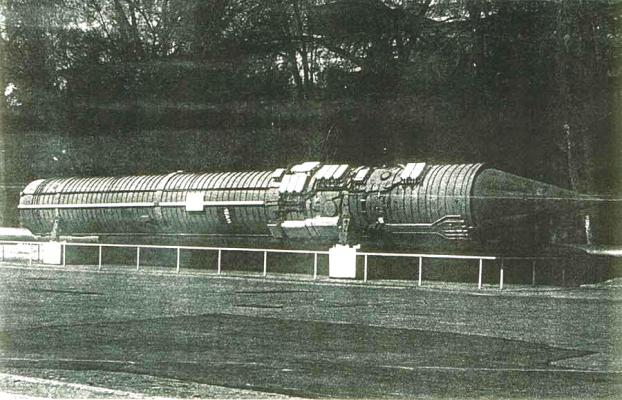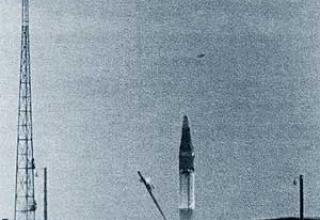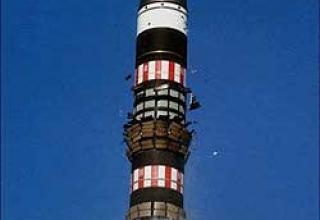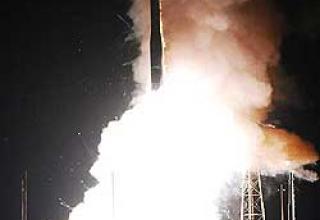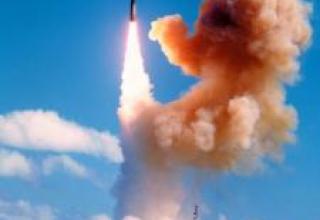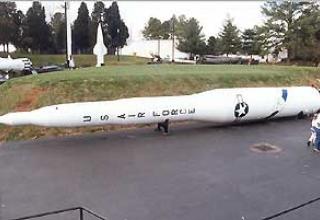In the early 1970s, given the real possibilities of highly effective radio electronic suppression methods by a potential enemy of the Strategic Missile Forces combat control facilities, it became a very urgent task to ensure that combat orders are brought from the highest levels of command (the General Staff of the USSR Armed Forces, the Strategic Missile Forces Command) to the command posts and individual launchers of strategic missiles on alert in case of a state of emergency.
The idea arose to use for these purposes, in addition to the existing communication channels, a special command missile equipped with a powerful radio transmitter, launched in a special period and giving commands to launch all missiles on combat duty throughout the USSR.
The development of a special command missile system, called "Perimeter", was assigned to Yuzhnoye SDO by the USSR government decree N695-227 of August 30, 1974. As a base missile originally intended to use the missile MP-UR100 (15A15), later stopped at the missile MP-UR100 UTTH (15A16). The modified control system of the missile received the index 15A11.
In December 1975 the sketch design of the command missile was executed. The missile was equipped with a special head unit, which had an index 15B99, which included the original radio engineering system of the LPI Design Bureau development. To ensure the conditions for its operation, the MS had to have a constant orientation in space during the flight. The special system of its calming, orientation and stabilization was developed with the use of cold compressed gas (taking into account the experience of development of the remote control for the HF "Mayak"), which significantly reduced the cost and time of its creation and development. The production of the 15B99 HRC was organized at the NGO "Strela" in Orenburg.
The Perimeter command missile was later replaced by new systems of the same purpose PKP Barrier and PKP Granit.
Composition:
After ground testing of new technical solutions in 1979 the command missile LKI began. At NIIP-5, and sites 176 and 181, were put into operation two experimental mine PU. In addition, on site 71 was created a special command post, equipped with a newly developed unique combat control equipment to provide remote control and launch the command rocket on orders received from the highest control of the Strategic Missile Forces. At a special technical position in the assembly building, a shielded anechoic chamber equipped with equipment for autonomous inspection of the radio transmitter was erected.
Flight tests of the 15A11 missile (see layout chart) were conducted under the leadership of the State Commission, headed by Lieutenant General V. Korobushin, First Deputy Chief of Staff of the Strategic Missile Forces.
The first launch of the command missile 15A11 with the transmitter equivalent was successfully held December 26, 1979. Were checked the developed complex algorithms of interfacing all systems involved in the launch, the possibility of providing the missile with a given trajectory of flight 15B99 GC (the top of the trajectory at an altitude of about 4000 km, range 4500 km), the work of all service systems GC in normal mode, confirmed the correctness of technical decisions.
10 missiles were set aside for flight tests. In connection with successful launches and fulfillment of tasks, the State Commission found it possible to be satisfied with seven launches.
In the course of Perimeter system tests, real launches of 15A14, 15A16, 15A35 rockets were made from combat objects under orders given by 15B99 SGC in flight. Preliminary, additional antennas and new receivers were mounted on the PA of these missiles. All the boosters and command posts of the Strategic Missile Forces subsequently underwent these modifications.
The 15P716 launcher is a silo-based, automated, high-security, "OS" type launcher.
Along with the flight tests, ground testing of the entire complex was carried out under the conditions of the impact of the nuclear explosion at the test site of the Kharkov Institute of Physics and Technology, in the test laboratories of VNIIEF (Arzamas), at the nuclear test site Novaya Zemlya. The conducted tests have confirmed the operability of the equipment of SU and SSC at the levels of influence of the nuclear explosion, exceeding the specified in TTT MO.
Even during the flight tests, the government's resolution set a task to expand the functions of the command missile system to bring combat orders not only to the Strategic Missile Forces facilities, but also to strategic missile submarines, long-range and maritime missile-carrying aircraft at airfields and in the air, control points of the Strategic Missile Forces, Air Force and Navy.
The command missile LCIs were completed in March 1982. In January 1985 the complex was put on combat duty. For more than 10 years the complex of command missiles successfully fulfilled its important role in the defense capabilities of the state.
In the framework of the START-1 agreement in June 1995 the command missile system was taken off duty.
Many enterprises and organizations of different ministries and departments took part in creation of the complex. The main of them: NPO "Impulse" (V.I.Melnik), NPO AP (n.A.Pilyugin), KBSM (A.F.Utkin), CCBM (B.R.Aksyutin), MNIIRS (A.P.Bilenko), VNIIS (B.Y.Osipov), CCB "Geophysics" (G.F.Ignatyev), NII-4 MO (E.B.Volkov).
Characteristics:
| Range of fire, km | 40 - 400 (280 for C-602) |
| Flight speed, M. | 0.6-0.9 |
| Height of flight over the sea, m | 7-10 |
| Flight height above ground, m | 30 |
| Dimensions, m: - length (without starting accelerator) - booster length - diameter - wingspan |
6.1 7.0 0.540 2.9 |
| Starter weight, kg | 1350 |
| Start accelerator weight, kg | 210 |
| Weight of combat unit, kg | 300 |
Testing:
Flight tests of the 15P011 complex started at NIIP-5 in 1979 and were completed in 1986. Only launches during the LKI:
- successful - 6
- partially successful - 1
Sources:
- "Призваны временем. Ракеты и космические аппараты конструкторского бюро "Южное"./ Под общей редакцией С.Н.Конюхова/. Д.: Арт-Пресс, 2004,-232с.
- "КБ специального машиностроения: От артиллерийских систем до стартовых комплексов" (под редакцией Ушакова В.С.) .СПб, 2004. Карпенко А.В., Уткин А.Ф., Попов А.Д.
- "Отечественные стратегические ракетные комплексы". СПб, Невский бастион-Гангут 1999 год. UR-100MR / SS-17 SPANKER
